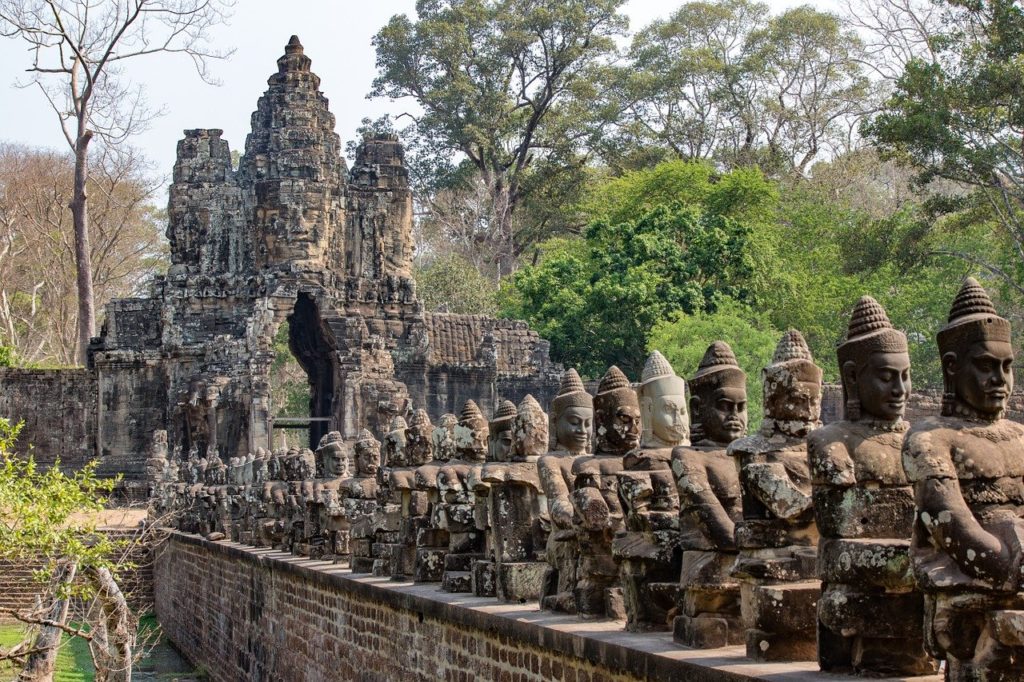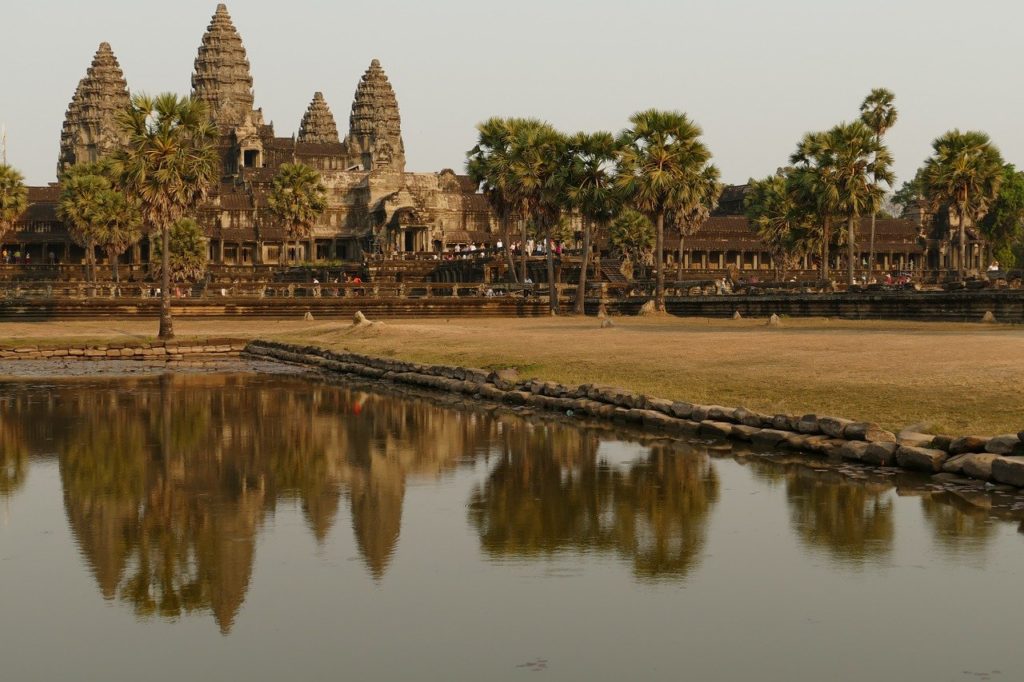Immersive Angkor will allow visitors to travel back in time and see with their own eyes how the ancient Khmer people built temples that were so grand in their conception and design that they managed to outlast the Khmer Empire that they were monumental parts of. Stepping into a large room, 3D images will emerge from eight directions and circle visitors, who can then see historical events being played out in front of their eyes through the use of high-end technology.
“For the visitors, both international and local, the immersive experience will utilize cutting-edge technology that allows them to witness a recreation of the temples being constructed through ultra-realistic 3D animations,” says Soreasmey Ke Bin, CEO of Confluences. Confluences, founded in 2014, specializes in assisting other businesses that are looking to establish or expand their operations in Cambodia or other Southeast Asian markets.
Immersive Angkor is a joint venture with multiple companies involved, including Confluences, and it is the first exhibition of its kind in the region.

Ke Bin told The Post that “Immersive Angkor will be the first permanent immersive museum in Southeast Asia and we are incredibly proud that it will be located in Siem Reap, which is such a magnificent, iconic and prominent heritage site. This is the kind of complimentary museum exhibition that Angkor Wat deserves.”
One of the companies that Confluences is working with – French 3D-scanning firm Iconem – are considered the industry leader and a pioneer in the field of 3D-scanning world heritage sites to create this type of immersive exhibition.
Iconem, a company that has worked with large global organizations such as UNESCO and museums such as the Louvre, was originally founded in order to preserve a 3D record of endangered heritage sites so that future generations could learn from them if the actual physical sites were destroyed.
Etienne Tellier, CEO of Iconem, stated that “the Immersive Angkor project is based on a unique partnership between two start-ups. Iconem brings its cutting-edge techniques in the 3D documentation of archaeological sites while Confluences brings its perfect knowledge of Cambodia’s institutions and culture.
Ke Bin told The Post that “it’s highly educational because probably more than 50% of international visitors don’t fully understand the temples’ history and what they have been used for or who created them.” “Visitors are amazed by the architecture and the temples’ magnificence, but they tend to forget about the historical significance or context,” he says.
“What we will be offering will be more complementary and can work in tandem with the traditional in-person visits to the temples with a guide. What Immersive Angkor offers is totally different from an experience perspective, but it really assists with the visitors’ understanding of the history in a fun way,” Ke Bin says.

Confluences and its partners have yet to secure an exact location for Immersive Angkor, but they say they will need a place with a total surface area of approximately 1000 sqm. The building will have a high ceiling – five to six metres – but Ke Bin says they are really just focused on meeting two challenges: Providing a top-quality experience and satisfying whatever health guidelines may be in place when they open.
“Each visitor will be able to move freely within the room, while the video, music and animations are displayed all around them,” says Ke Bin, while adding that the project may break ground in the first or second quarter of 2022.
“For that reason, we don’t want to overcrowd the space, and that’s why we have been considering a maximum capacity for each session of about 150 people, which provides about 7 square metres per person in the room,” Ke Bin says.
As the name suggests, Immersive Angkor will be dedicated solely to the topic of the Angkor temples and to the mighty Khmer empire and civilization.
“We envision three or four temples making up the main part of our exhibition, including the most well-known temples of the archaeological park – Angkor Wat, Bayon and Ta Prohm. But our goal is also to highlight some of the smaller and lesser-known temples, or parts of temples, that are currently restricted for the public to access,” Ke Bin says.
Ke Bin says that in the long term, in order to draw repeat domestic tourists, the exhibition may grow to include other Khmer temples outside of the park as part of its immersive content.
They’d like to dedicate part of the exhibition to the intangible Khmer heritage listed with UNESCO, and to the Khmer people and the Cambodian environment.

“Immersive Angkor is a permanent museum, but the exhibitions within the museum space could rotate from year to year so that the visitors can return to discover one temple after another,” says Ke Bin.
Ke Bin says that all of the content will be thoughtfully discussed and developed in cooperation or with the approval of academic authorities in Cambodia and internationally – and foremost among those will be the Apsara National Authority.
Ke Bin strongly believes that everyone is patiently waiting for the borders to re-open and that once it is allowed again the flow of travel and tourism will come back stronger than ever, both internationally and domestically.
“We envisage that tourism will be slightly different, and we do believe it’s a great time to set a new standard for responsible tourism. Tourism will definitely rebound, but the question is when and how?
“Cambodia has to be ready for the rebound, and Immersive Angkor is one example of an improved tourism experience for Angkor,” Ke Bin says.
According to phnompenhpost.com











